Ceres: Definition, Facts, Location, Name, Distance, Discovery
Ceres is a dwarf planet located in the main asteroid belt between Mars and Jupiter. Giuseppe Piazzi discovered Ceres on January 1, 1801, at the Palermo Astronomical Observatory in Sicily. Ceres has a diameter of 946 km and orbits the Sun at 413 million kilometers. Ceres was initially classified as a planet, then an asteroid, before being designated a dwarf planet in 2006.
Ceres is the smallest dwarf planet in our solar system, with a diameter of 950 kilometers. Ceres contains about one-third of the asteroid belt’s total mass. Ceres lacks an atmosphere and its surface is composed of water ice mixed with darker organic material. NASA’s Dawn spacecraft orbited Ceres from 2015 to 2016, revealing fascinating geological features such as bright spots and signs of past cryovolcanic activity.
Ceres orbits the Sun in the asteroid belt between Mars and Jupiter, 413 million kilometers from the Sun. Ceres is the largest known asteroid in the belt, accounting for 25% of the total mass in this region. Ceres orbits between 2.88 and 3.02 AU from the Sun, with an orbital path tilted at 10.6 degrees relative to Earth’s orbital plane.
Ceres was named after the Roman goddess of agriculture, fertility, and harvest. Giuseppe Piazzi originally discovered Ceres in 1801, naming it Ferdinandea. Astronomers later renamed it Ceres to honor the Roman goddess. Ceres symbolizes crop growth, abundance, and productivity in Roman mythology.
Ceres orbits 413,000,000 kilometers from Earth on average. Distance varies from 243 million kilometers at closest to 430 million kilometers at farthest. Light travels between Earth and Ceres in 22-40 minutes. Earth-Ceres distance equals 1.38 astronomical units.
What is Ceres dwarf planet?
Ceres is a dwarf planet located in the main asteroid belt between Mars and Jupiter. Giuseppe Piazzi discovered Ceres on January 1, 1801, at the Palermo Astronomical Observatory in Sicily. Ceres was initially classified as a planet, then an asteroid, before being designated a dwarf planet. Ceres has a diameter of 946 km and orbits the Sun at 413 million kilometers.
Ceres planet status changed over time. Astronomers initially considered Ceres a planet upon its discovery in 1801. The International Astronomical Union later reclassified Ceres as an asteroid after more objects were found in the asteroid belt. Ceres asteroid origins contribute to its unique classification. Ceres shares characteristics with both planets and asteroids, accounting for about one-third of the asteroid belt’s total mass.
Ceres orbit follows a path within the main asteroid belt. Ceres completes one orbit of the Sun in 4.6 Earth years. Ceres has an orbit around the Sun at an average distance of 413 million kilometers. Ceres dwarf planet classification resulted from its failure to meet the criterion of clearing its orbit of other objects. Ceres revealed new information about its composition and geology through NASA’s Dawn spacecraft mission from 2015 to 2016.
Why was Ceres reclassified as a dwarf planet?
Ceres was reclassified as a dwarf planet in 2006 by the International Astronomical Union. Ceres failed to clear its orbital neighborhood, a key criterion for planet status. Ceres’ spherical shape distinguishes it from asteroid belt neighbors. Scientists recognized Ceres as different from other planets. Pluto underwent similar reclassification simultaneously.
Ceres has a diameter of 946 kilometers. Ceres is massive enough for its gravity to make it spherical, achieving hydrostatic equilibrium. Ceres differs from other asteroids in several ways. Ceres has a surface composed of water ice and darker organic material. Ceres comprises about 25% of the total mass of the asteroid belt. Ceres is the only object in the asteroid belt rounded by its own gravity.
The International Astronomical Union defined a new category called dwarf planets. Dwarf planets must orbit the Sun directly. Dwarf planets must be massive enough for their gravity to make them spherical. Dwarf planets cannot dominate their orbits among other objects. Ceres met all these criteria for dwarf planet classification. Ceres orbits between 2.88 and 3.02 astronomical units from the Sun. Ceres has a highly eccentric orbit around the Sun.
What are fun facts about Ceres?
The fun facts about Ceres are listed below.
- Ceres is the smallest dwarf planet in our solar system, with a diameter of only 950 kilometers.
- Ceres is the largest object in the asteroid belt, containing about one-third of the belt’s total mass.
- Ceres is the closest dwarf planet to the Sun, orbiting at an average distance of 413 million kilometers.
- Ceres is uniquely positioned in the asteroid belt between Mars and Jupiter, making it the only dwarf planet in the inner solar system.
- Ceres is named after the Roman goddess of corn and harvests.
- Ceres was the first asteroid ever discovered, spotted by Giuseppe Piazzi on January 1, 1801.
- Unlike other dwarf planets, Ceres lacks an atmosphere.
- The surface of Ceres is composed of water ice mixed with darker organic material.
- Scientists consider Ceres a promising site for astrobiological studies due to the presence of water ice and a potential subsurface ocean.
- NASA’s Dawn spacecraft orbited Ceres from 2015 to 2016, revealing fascinating geological features such as bright spots and signs of past cryovolcanic activity.
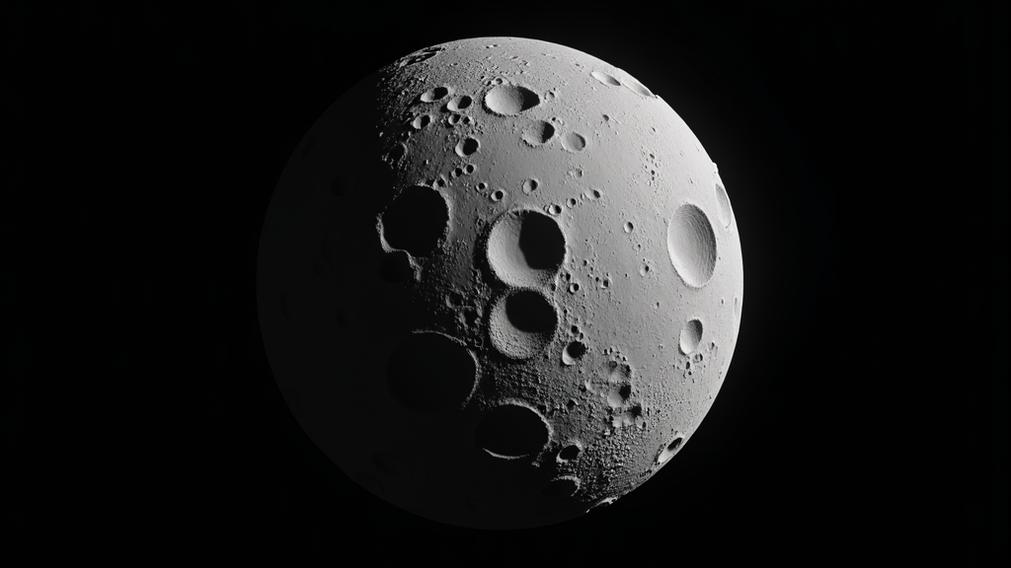
Ceres is the smallest dwarf planet in our solar system, discovered in 1801 by Italian astronomer Giuseppe Piazzi. Named after the Roman goddess of agriculture, Ceres orbits 413 million kilometers from the Sun. Scientists found a massive water vapor plume on Ceres in 2015. Ceres has bright spots and a potential subsurface ocean.
Ceres stands out as the closest dwarf planet to the Sun. It orbits at an average distance of 413 million kilometers from our star. Ceres occupies a unique position in the asteroid belt between Mars and Jupiter. It is the only dwarf planet located in the inner solar system.
Ceres bears the name of the Roman goddess of corn and harvests. This celestial body was the first asteroid ever discovered, spotted by Giuseppe Piazzi on January 1, 1801. Ceres lacks an atmosphere, setting it apart from other dwarf planets. Its surface consists primarily of water ice mixed with darker organic material.
Scientists consider Ceres a candidate for studying signs of life in our solar system. The presence of water ice and a potential subsurface ocean make it an intriguing target for astrobiological studies. NASA’s Dawn spacecraft orbited Ceres from 2015 to 2016, revealing fascinating geological features. These include bright spots and signs of past cryovolcanic activity on its surface.
Where is Ceres located in the solar system?
Ceres orbits the Sun in the asteroid belt between Mars and Jupiter. The asteroid belt exists 413 million kilometers from the Sun. Ceres is the largest known asteroid in the belt. Giuseppe Piazzi discovered Ceres in 1801. The International Astronomical Union reclassified Ceres as a dwarf planet in 2006.
Ceres is the largest object in the asteroid belt, accounting for 25% of the total mass in this region. The International Astronomical Union reclassified Ceres as a dwarf planet in 2006, making it the only dwarf planet in the inner solar system. Ceres orbits between 2.88 and 3.02 AU from the Sun, with an orbital path tilted at 10.6 degrees relative to Earth’s orbital plane. Ceres lies within the Kirkwood gap of the asteroid belt, created by Jupiter’s gravitational influence. Ceres is located 413 million kilometers from the Sun, occupying a unique position within the Kirkwood gap.
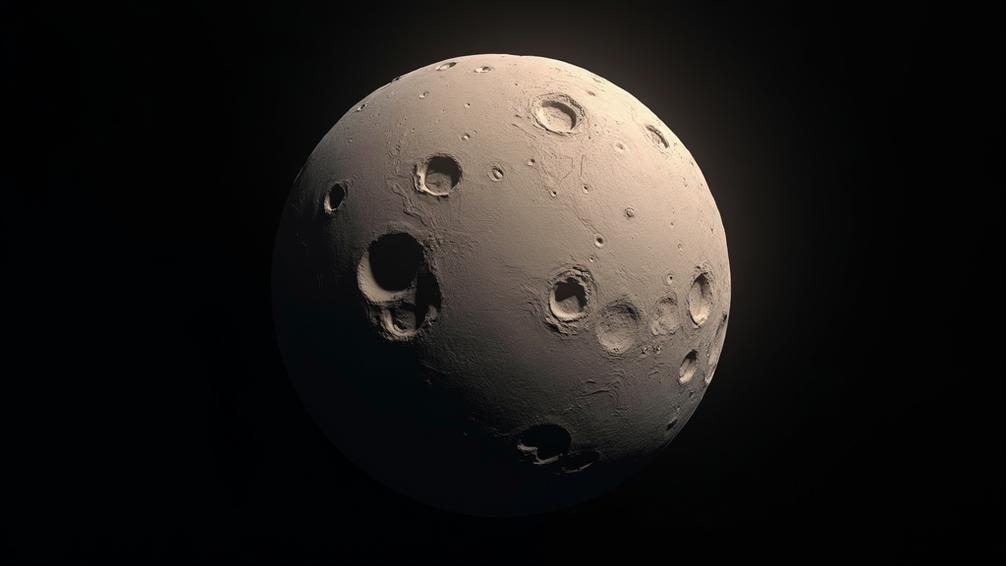
How far is Ceres from the sun?
Ceres orbits the Sun at an average distance of 257 million miles (413 million kilometers). Ceres’ average distance equals 2.88 astronomical units (AU). Sun-Ceres distance is 2.76 times farther than Earth’s. Ceres resides 22% of the Sun-Pluto distance away. NASA’s Dawn mission provided valuable insights into Ceres’ composition and geology.
What was Ceres dwarf planet named after?
Ceres was named after the Roman goddess of agriculture, fertility, and harvest. Giuseppe Piazzi originally discovered Ceres in 1801, naming it Ferdinandea. Astronomers later renamed it Ceres to honor the Roman goddess.
Ceres orbits the Sun at 413 million kilometers in the asteroid belt between Mars and Jupiter. Ceres has a diameter of 946 kilometers, making it the largest object in the asteroid belt. The name Ceres was fitting for an object initially thought to be a planet. Ceres takes 4.6 Earth years to complete one orbit around the Sun. The International Astronomical Union reclassified Ceres as a dwarf planet in 2006.
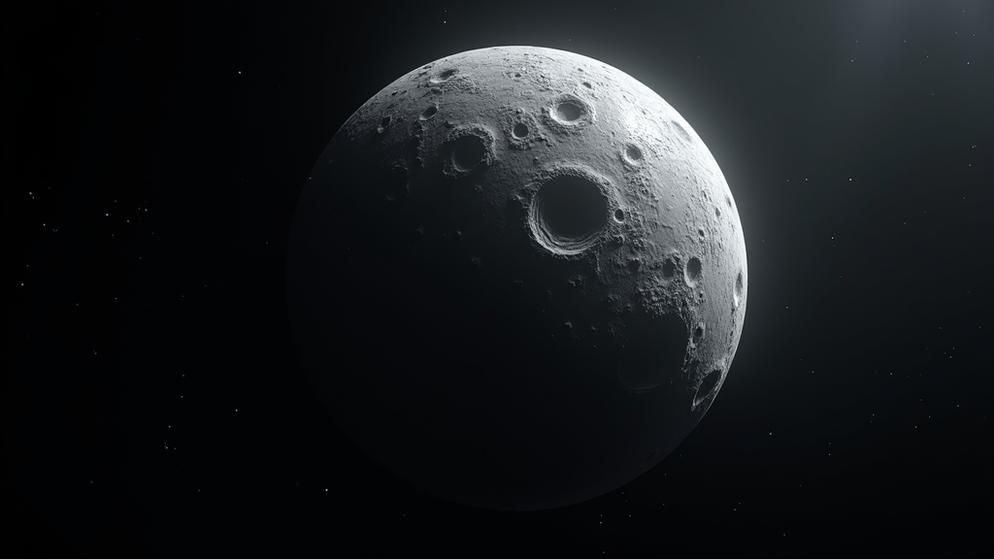
How far is Ceres from Earth?
Dwarf planet Ceres orbits 413,000,000 kilometers from Earth on average. Distance varies from 243 million kilometers at closest to 430 million kilometers at farthest. Light travels between Earth and Ceres in 22-40 minutes. Earth-Ceres distance equals 1.38 astronomical units. NASA’s New Horizons spacecraft would take 17 years to reach Ceres.
Ceres orbits the Sun at a distance of 413 million kilometers (2.8 astronomical units), placing it in the main asteroid belt between Mars and Jupiter. Ceres has a size of 946 kilometers in diameter, making it the largest object in the asteroid belt. Ceres began forming around 4.5 billion years ago from the accretion of dust and ice particles in the early solar system. Ceres takes about 4.6 Earth years to complete one orbit around the Sun, with its highly inclined orbit ranging from 2.55 to 3.03 astronomical units from the Sun.
Can you see Ceres with a telescope?
Ceres is observable through good quality telescopes. Giuseppe Piazzi discovered Ceres in 1801 using a telescope. Telescopes reveal Ceres as a small, bright dot without detailed features. Powerful telescopes with 200x or more magnification provide clear Ceres observation. Ceres appears smaller and fainter than Vesta. Stargazing enthusiasts require telescopes with 80-100 mm aperture and 100-150x magnification for Ceres viewing.
Observers will best see Ceres when it is at opposition every 1.28 years. Ceres appears as a small, faint dot moving slowly against background stars in the sky. Opposition occurs when Earth passes between the Sun and Ceres. Ceres reaches a maximum brightness of magnitude 6.7 at opposition. Ceres has a brightness between magnitude 7 to 8. Astronomers recommend observing Ceres on clear, dark nights when it is highest in the sky.
Binoculars or telescopes will reveal Ceres at opposition. Observers will spot Ceres with binoculars as a small, faint dot. Astronomers recommend binoculars with 7x or 10x magnification and at least 50 mm (2 inch) aperture for viewing Ceres. Binoculars with 7×50 or 10×50 specifications provide wide fields of view for locating Ceres.
Viewing Ceres requires knowledge of its position in the sky. Ceres has a highly inclined orbit ranging from 2.88 to 3.03 astronomical units from the Sun. Ceres opposition occurs in late January or early February. Ceres reaches its brightest magnitude of 6.5 to 7.5 at opposition. Sirius, the brightest star, has a magnitude of -1.46 for comparison.
How does Ceres compare to Earth?
Ceres, the largest asteroid belt object, has a radius of 296 miles (476 kilometers). Ceres measures 1/13th of Earth’s moon size. Ceres contains 25% water ice by mass compared to Earth’s 0.02%. Ceres exhibits 2.8% of Earth’s surface gravity. Ceres orbits 257 million miles from Earth. Ceres rotates every 9.1 hours, causing equatorial bulging.
Ceres orbits the Sun at a distance of 2.8 astronomical units. This makes it the closest dwarf planet to Earth. The composition of Ceres differs from Earth’s. Ceres consists of 50% water by volume, compared to Earth’s 0.1%. Ceres contains 73% rock by mass. Ceres holds more water than any world in the inner solar system except Earth.
Physical characteristics of Ceres contrast with Earth’s. Ceres has less than 3 percent of Earth’s gravity. The density of Ceres is about a quarter the size of Earth’s moon. These differences in size, composition, and physical properties make Ceres a unique object of study in our solar system.
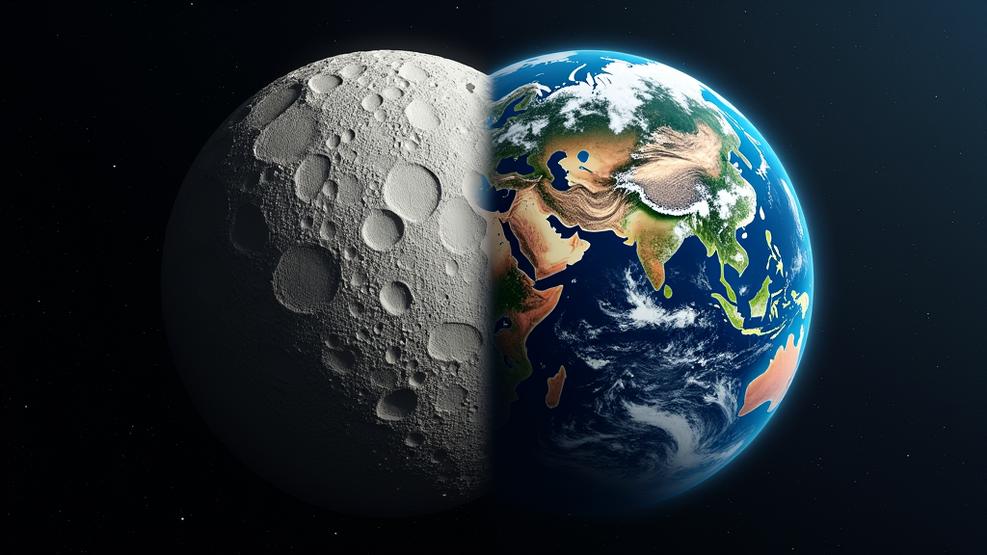
When was Ceres discovered?
Ceres was discovered on January 1, 1801, by Italian astronomer Giuseppe Piazzi at the Palermo Observatory in Sicily. Piazzi initially thought Ceres was a comet. Ceres became the first asteroid discovered in astronomical history. The discovery marked the beginning of asteroid research and redefined understanding of the solar system.
Ceres became the first object discovered in the asteroid belt between Mars and Jupiter. Piazzi discovered Ceres while searching for a hypothetical “missing planet” using a telescope. Ceres has a diameter of 946 km. Ceres orbits the Sun at an average distance of about 413 million km.
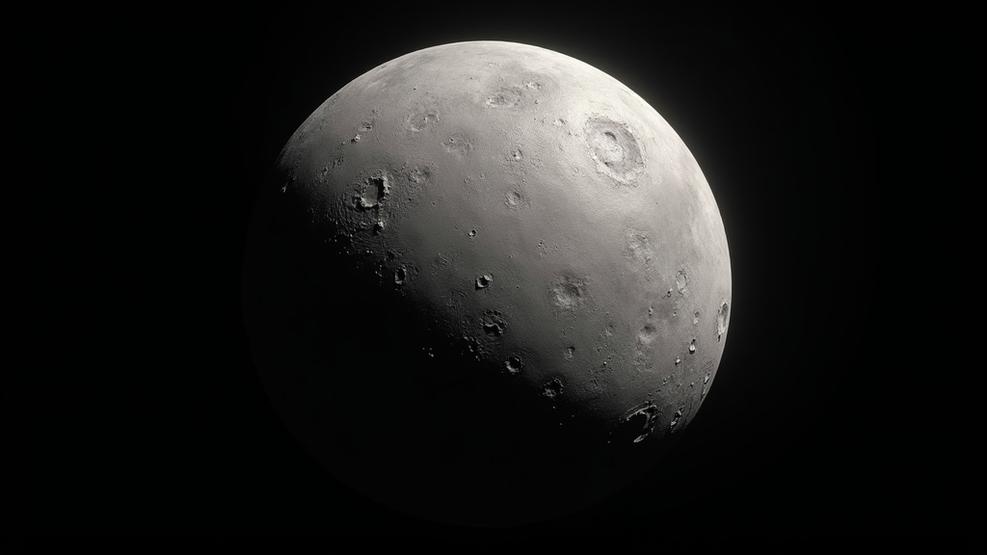
Who discovered Ceres?
Giuseppe Piazzi discovered Ceres on January 1, 1801. Piazzi, an Italian astronomer, found Ceres using a telescope at the Palermo Observatory in Sicily. Ceres became the first object discovered in the asteroid belt between Mars and Jupiter. Initially classified as a planet, Ceres is now considered a dwarf planet.
Ceres was named by Piazzi after the Roman goddess of agriculture and Sicily’s patron deity. Ceres became the first new planet discovered since Uranus in 1781. Piazzi’s discovery opened up a new field of asteroid research in astronomy. Ceres was originally classified as a planet, then reclassified as an asteroid. Ceres became classified as a dwarf planet by the International Astronomical Union in 2006.
What is the comparison between Ceres and the Moon?
Ceres has a flattened sphere shape with a 490 km equatorial radius and 455 km polar radius. Moon exhibits a more rounded shape with a 3,475 km diameter. Ceres measures only 1/13th of Moon’s size. Moon’s volume exceeds Ceres’ by 50 times. Ceres is classified as a dwarf planet, unlike Moon.
Ceres is located in the asteroid belt and classified as a dwarf planet. The Moon orbits Earth and is classified as a natural satellite. Ceres rotates faster relative to its orbit than the Moon. Ceres has no moons, unlike Earth’s Moon. Ceres orbits the Sun at an average distance of 413 million km. The Moon orbits Earth at an average distance of 384,400 km.
Ceres has shown a surface with many craters and bright spots, thought to be salt deposits. The Moon has a more varied surface with craters and dark basaltic plains visible from Earth. Ceres has a surface rich in water ice, while the Moon’s surface is composed of silicate minerals. Both Ceres and the Moon are airless bodies primarily composed of rock and metal.
How big is Ceres?
Ceres is a substantial celestial body in the asteroid belt. Ceres has a diameter of approximately 590 miles (950 kilometers). The radius of Ceres measures 296 miles (476 kilometers). Ceres possesses an equatorial radius of 490 kilometers and a polar radius of 455 kilometers. Recent measurements have refined Ceres’ diameter to 939.4 kilometers (592 miles). Some estimates put Ceres’ diameter at 953 kilometers. Ceres boasts a surface area of approximately 1,100,249 square miles.
Ceres’ shape is flattened at the poles and bulging at the equator. Ceres’ size is significant compared to other objects in the asteroid belt. Astronomers initially considered Ceres to be a planet upon its discovery in 1801. Scientists later reclassified Ceres as an asteroid. The International Astronomical Union reclassified Ceres as a dwarf planet in 2006. Ceres’ size contributes to its classification as a dwarf planet.
Is Ceres bigger than pluto?
Ceres is smaller than Pluto in diameter. Ceres has a diameter of 946 km. Pluto has a diameter of 2,374 km. Ceres is 2.5 times smaller in diameter than Pluto. However, Ceres is bigger than Pluto in mass. Dawn spacecraft orbited Ceres from 2015 to 2016, revealing its composition and geology.
Ceres has a mass of 9.44 × 10^23 kilograms. Pluto has a mass of 1.31 × 10^22 kilograms. Ceres comprises about 25% of the total mass of the asteroid belt. Ceres has a surface composed of water ice mixed with darker organic material. Ceres is a unique and fascinating world with its own geology and composition.
NASA measured Ceres’ diameter to be 946 kilometers. Ceres is smaller than Earth’s moon. Pluto is larger than Ceres but still smaller than Earth’s moon. Scientists measured Ceres’ size using orbital mechanics and its mass using gravitational interactions with other asteroids. Ceres has an interior thought to be differentiated into a rocky core and icy mantle.
What is the difference between Ceres and Pluto?
Ceres dominates the asteroid belt between Mars and Jupiter. Pluto resides in the distant Kuiper Belt. Ceres measures 946 kilometers in diameter. Pluto is nearly three times larger at 2,374 kilometers. Ceres consists of water ice and organic material. Pluto’s surface contains methane and nitrogen ices. Ceres has no moons. Pluto hosts five moons.
Location and position in the solar system set these dwarf planets apart. Ceres resides in the asteroid belt between Mars and Jupiter, making it the only dwarf planet in the inner solar system. Pluto orbits in the distant Kuiper Belt beyond Neptune, at the edge of our solar system.
Discovery timelines for these celestial bodies differ. Giuseppe Piazzi discovered Ceres in 1801, long before Pluto’s discovery. Clyde Tombaugh found Pluto much later, in 1930.
Composition varies between Ceres and Pluto. Pluto’s surface consists of 90% ice, while Ceres has only 10% ice on its surface. Ceres has a heavily cratered surface composed of 90% rock. Ceres has a possible subsurface ocean of water ice and organic material.
What is the length of year on Ceres?
Ceres completes one orbit around the Sun in 1,682 Earth days. Ceres’ year equals 4.6 Earth years. Scientists study Ceres’ orbital period to understand asteroid belt formation and early solar system evolution. Ceres rotates on its axis every 9.1 hours, exhibiting a relatively fast rotation compared to other celestial bodies.
How long is a day on Ceres?
Ceres completes one rotation in 9 hours 4 minutes. Day length on Ceres is significantly shorter than Earth’s 24-hour day. Ceres orbits the Sun in 4.6 Earth years. Rapid rotation results from Ceres’ small size and low mass. Ceres experiences minimal seasonal variations due to its 4-degree axis tilt.
Specific measurements of Ceres’ rotation period vary . Ceres has a sidereal day of 9.074 hours according to some calculations. Other measurements indicate Ceres’ day length is 9 hours 4 minutes. The most commonly cited figure for Ceres’ day length is 9.1 hours.
Ceres orbits the Sun at a distance of 413 million kilometers. Ceres takes 4.6 Earth years or 1,680 Earth days to complete one orbit around the Sun. Ceres has a direct rotation, spinning in the same direction as its orbital motion. Ceres does not have a retrograde rotation like Venus.
What is the Ceres surface temperature?
Ceres surface temperature ranges from -105°C to 5°C (-157°F to 41°F). Daytime temperatures reach 28°C (82°F) near the equator. Nighttime temperatures drop to -106°C (-159°F). Average temperature is -68°C (-90°F). NASA’s Dawn spacecraft collected temperature data between 2015-2016 using radiometry and thermal imaging. Temperature extremes occur at Ceres’ equator and poles.
The overall surface temperature range on Ceres extends from -38°C to -163°C. Ceres experiences extreme temperature variations, with a minimum surface temperature of 110K and a maximum of 240K. The mean surface temperature of Ceres is 235K±4K. NASA’s Dawn mission, which orbited Ceres from 2015 to 2016, revealed an average surface temperature of 168K (-105°C).
The dwarf planet’s distance from the Sun varies due to its elliptical orbit, affecting the amount of solar radiation received. Ceres has a thin atmosphere called an exosphere, consisting of water vapor and other gases, which provides minimal insulation or temperature regulation. The surface composition, containing water ice mixed with darker organic material, impacts temperature distribution. Ceres exhibits low thermal inertia, contributing to the significant temperature variations observed across its surface.
What is on the surface of Ceres?
Ceres’ surface features salt deposits, including sodium chloride and magnesium chloride. Carbonates like calcium and magnesium carbonate are present. Dark organic materials rich in carbon and hydrogen accompany the salts. Rocky, dusty terrain characterizes the surface, with craters, valleys, and mountains. Bright spots composed of salt deposits appear, surrounded by darker material. The crust contains water ice and organic materials.
Water ice comprises 25% of Ceres’ surface material. Hydrated minerals like clays and phyllosilicates are abundant on the surface. Carbonates, including sodium carbonate, appear prominently, especially in the Occator crater. Salt deposits of sodium carbonate and ammonium chloride formed through briny water evaporation. Clay minerals such as NH4-phyllosilicates and Mg-phyllosilicates exist across the surface.
Dark materials coat parts of Ceres’ surface. Organic matter concentrates in darker regions, deposited by meteorite impacts. Craters dominate Ceres’ geologically inactive surface. The Dawn spacecraft, orbiting Ceres from 2015 to 2016, revealed these surface features.
Ceres’ spectral slope indicates the presence of water ice and darker organic material. Scientists created a Ceres map showing craters, salt deposits, and hydrated minerals. The diverse surface composition includes ice, organics, and various minerals. Researchers initially thought Ceres was a dry, rocky world. New discoveries from Dawn’s data expanded understanding of Ceres’ composition and history.
Does Ceres have rings?
Ceres, the largest dwarf planet in the asteroid belt, does not have rings. NASA’s Dawn spacecraft confirmed Ceres’ ringsless nature during its 2015-2016 orbit. Dawn’s observations revealed no evidence of a ring system. Ceres’ small size and weak gravity make stable rings unlikely. Ceres remains intriguing due to its potential subsurface ocean and possibilities for life.
The dwarf planet’s mass is insufficient to hold onto a ring system. Ceres appears as a solitary object without rings or moons, unlike some other dwarf planets and centaurs. The asteroid belt contains many small rocky bodies orbiting the Sun, and Ceres stands out as the largest among them. Ceres has a circular orbit with a semi-major axis of 413 million kilometers and an orbital period of about 4.6 Earth years.
What color is Ceres?
The dwarf planet Ceres appears primarily gray. Ceres’ surface composition includes water ice and darker organic material. Slight color variations exist across different areas. Ceres is not visible to the naked eye, requiring telescopes for observation. The planet’s overall gray hue contrasts with Mars’ reddish and Neptune’s bluish appearances.
Is there life on Ceres?
Ceres potentially harbors life. Water ice and organic material exist on Ceres. Liquid water likely resides beneath its surface. Microbes or bacteria possibly survive in Ceres’ subsurface environment. Harsh conditions make surface life difficult. Scientists consider Ceres a fascinating target for extraterrestrial life research. Future missions will provide more information about potential life on Ceres.
Surface temperatures on Ceres range from -105°C to -35°C, making it inhospitable for most known life forms. Ceres has an extremely thin atmosphere known as an exosphere, composed mostly of water vapor. Ceres has surface gravity about 2.8% of Earth’s, which would affect potential life form evolution.
Evidence suggests Ceres may have a subsurface ocean of liquid saltwater. This subsurface ocean could provide a habitable environment for basic lifeforms. Ceres has remained warm enough to sustain liquid water for billions of years. Ceres’ subsurface likely has more suitable temperature and pressure conditions for life. Scientists propose microbial life could thrive in Ceres’ subsurface environments.
Research continues to investigate the possibility of life on Ceres. NASA’s Dawn spacecraft orbited Ceres from 2015 to 2016, providing valuable data. The Herschel Space Observatory detected Ceres’ atmosphere in 2012. Future missions, such as NASA’s Psyche mission scheduled to launch in 2023, will provide more insights into Ceres’ habitability. Scientists search for biosignatures and investigate Ceres’ potential to host extremophile bacteria.
When will the Ceres colony be established?
No concrete plans currently exist for establishing a Ceres colony. Technological advancements, infrastructure development, and strategic planning are required for such an endeavor.
2024 represents the earliest date for a Ceres base in fiction. The video game “Astroneer” features a human settlement on Ceres in this year, highlighting growing interest in space exploration.
2050 is an optimistic estimate for initial Ceres settlement. This timeline assumes breakthroughs in propulsion, resource utilization, and radiation protection, potentially allowing for a small temporary human presence.
2100 is a conservative estimate for a permanent Ceres colony. Steady progress in space technology and infrastructure development would be necessary, along with solutions for radiation protection, life support systems, and gravity mitigation.
2150-2200 is a timeline for Ceres settlement after Moon and Mars colonization. Successful establishment of self-sustaining presences on the Moon and Mars would precede expansion to the asteroid belt.
2500 is a pessimistic estimate for a self-sustaining Ceres colony. Significant delays in technological advancements and infrastructure development would result in this extended timeline.
What is the mass of Ceres?
Ceres’ mass is 9.44 × 10^23 kilograms. Dawn spacecraft precisely determined this value during its 2015-2016 orbit. Ceres comprises over one-third of the main asteroid belt’s total mass. Ceres’ mass equals 1/4,000th of Earth’s Moon and 1/100th of Pluto. Ceres has a density of 2.16 g/cm³, suggesting a composition of rock and ice.
Ceres weighs 947,000,000,000,000,000,000 kg or 943,000,000,000,000,000,000 kg when expressed in full. Ceres accounts for 5.21 × 10^-10 solar masses. Ceres comprises 30-40% of the total mass in the asteroid belt. Ceres contains significant amounts of water ice, making up about 25% of its mass. Ceres has a surface gravity of 2.8% of Earth’s, or 0.27 meters per second squared. Ceres weighs 0.00015 times the mass of Earth.
What is the diameter of Ceres?
Ceres has a diameter of approximately 940 kilometers (584 miles). Ceres is the largest asteroid and dwarf planet in the asteroid belt between Mars and Jupiter. Hubble Space Telescope and Dawn spacecraft observations measured Ceres’ dimensions. Ceres’ equatorial diameter is 946 km due to rotational bulging. Ceres’ polar diameter measures 909 km.
Ceres has an equatorial diameter of 959.2-980 km (596-609 miles). Its polar diameter measures 906.8-910 km (563-566 miles). The equivalent sphere diameter of Ceres is 940 km (584 miles). These measurements provide a comprehensive view of Ceres’ shape and size.
General estimates put Ceres’ diameter at 953 km (592 miles). NASA estimates Ceres’ diameter to be 585 miles (941 km). Comparisons to the Moon give Ceres a diameter of 592 miles (953 km). Scientists have extensively studied Ceres’ size and shape over the years, resulting in various measurements with differing degrees of precision.
Does Ceres have a magnetic field?
Ceres lacks a significant global magnetic field. Research suggests Ceres possesses a weak, undetectable magnetic field due to its small size and lack of an iron-rich core. Dawn spacecraft orbiting Ceres from 2015 to 2016 did not detect a substantial field. Ceres has a small, localized magnetic field in certain regions, generated by solar wind interactions.
Ceres lacks a strong magnetic field due to its internal structure. Scientists believe Ceres’ core is composed of rock and ice, with a small iron-rich component. The core is estimated to be 450-500 kilometers in diameter, too small to generate a significant magnetic field. Ceres’ core has a radius of 180 kilometers, insufficient for producing a substantial magnetic field. The dwarf planet’s core composition and size contribute to its weak magnetic field.
Ceres was not expected to have a strong magnetic field due to its size. The absence of a large iron-rich core, necessary for generating a strong magnetic field, further explains the lack of a substantial field. Ceres’ weak magnetic field provides insights into its internal structure and composition, distinguishing it from other celestial bodies with stronger magnetic fields.
What is Ceres made of?
Ceres consists of a mixture of water ice and darker organic materials. Water ice comprises 25 percent of Ceres’ surface mixture. Carbonates, clays, and salts make up the remaining 75 percent. Ceres possesses a crust of water ice and organic materials, a mantle of water ice and rocky materials, and a solid rocky core.
The surface of Ceres is a mixture of materials. Water ice is present on the surface, along with darker organic material and regolith. Dark materials cover much of Ceres’ exterior. Phyllosilicates and ammonium are found in the ice mantle.
Ceres follows a two-layer model. The rocky core has a radius of 170 kilometers. An ice mantle up to 100 kilometers thick surrounds this core. Clathrate hydrates exist in the subsurface layers of Ceres.
Ceres is geologically active, with evidence of recent water activity. Salty water exists below the surface. The dwarf planet has a mass of 9.44 x 10^23 kilograms and a diameter of about 946 kilometers. Ceres makes up about 1/3 of the total mass of the asteroid belt.
The water content of Ceres is estimated to be 25% of its mass. The surface temperature varies between -38°C in sunlit areas and -143°C in shadowed regions. Ceres has a very thin and transient atmosphere.
What is the atmosphere of Ceres?
Ceres possesses an extremely thin atmosphere primarily composed of water vapor. Dawn spacecraft detected this tenuous layer during its 2015-2016 orbit. Surface pressure measures 10^-3 to 10^-4 times Earth’s atmosphere. Solar radiation causes ice particles to sublimate, replenishing the transient atmosphere. Weak gravity (2.8% of Earth’s) makes atmosphere retention difficult. Other gases like carbon dioxide potentially exist.
The atmosphere of Ceres could be nitrogen-rich, containing up to 40% nitrogen. A’Hearn & Feldman (1992) researched the water vapor content in Ceres’ atmosphere. Solar radiation easily breaks down the ice molecules on Ceres’ surface, releasing water vapor and other gases into the atmosphere. The Herschel Space Observatory confirmed the presence of water vapor in Ceres’ atmosphere in 2012. Ceres’ atmosphere contains small amounts of methane and ammonia.
Ceres has ice volcanoes composed of ice instead of rock. Sori et al. (2017) studied these cryovolcanoes, which erupt with frozen materials and contribute to the atmosphere. Ice sublimating from the surface is another significant source of Ceres’ atmosphere. De Sanctis et al. (2015) found that Ceres’ surface consists of 25% water ice, providing ample material for sublimation. The Dawn spacecraft, which studied Ceres in detail starting in 2015, revealed the complex and dynamic geology of the dwarf planet, including cryovolcanic flows on its surface.
What is Ceres orbit?
Ceres orbits the Sun at 2.88 AU, completing one revolution every 4.60 Earth years or 1,680 days. Orbital characteristics include 0.08 eccentricity, 10.6° inclination, and 17.9 km/s speed. Ceres rotates every 9.07 hours with a 4° axial tilt. Giuseppe Piazzi determined these orbital properties in 1801.

